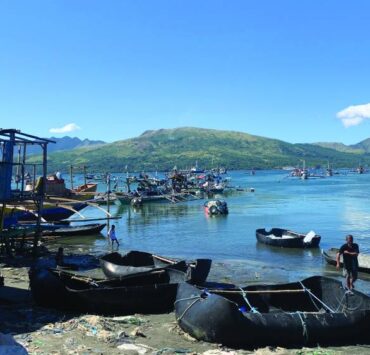US to deploy missiles to Batanes for drills

The United States is deploying several of its antiship missile system NMESIS to northern Luzon, including in Batanes, the Philippine province nearest Taiwan, during this year’s annual war games between Filipino and American troops, which starts Monday.
The Hawaii-based 3rd Marine Littoral Regiment said an unspecified number of the NMESIS launchers, or Navy-Marine Expeditionary Ship Interdiction System, will be airlifted to “multiple islands” in Batanes, located about 150 kilometers from Taiwan’s southernmost tip.
While this would strengthen the country’s defense, former Batanes Rep. Florencio “Butch” Abad, however, warned that it could put at risk the safety of the northernmost islands and the Ivatans.
The annual war games will be held from April 21 to May 9 in strategic locations in the country, including in areas and provinces facing the West Philippine Sea.
“This marks the inaugural deployment of the newly fielded Marine Corps weapon system to the Philippines and serves as a major milestone for the continuously developing US-Philippines alliance,” the 3rd Marine Littoral Regiment said.
No missiles to be fired
On April 15, Brig. Gen. Michael Logico of the Philippine Army, who also serves as “Balikatan” spokesperson, confirmed that the NMESIS had arrived in the Philippines.
The deployment of the NMESIS was first announced by US Secretary of Defense Pete Hegseth on March 28 during a visit to Manila as he renewed Washington’s ironclad commitment to its oldest treaty and military ally in the region.
The NMESIS is a highly mobile coastal antiship missile system designed to strike surface vessels from land-based positions at a distance of about 185 km.
For the past three years, the 3rd Marine Littoral Regiment has deployed Marines and sailors to the Philippines for the Balikatan at the request of the Armed Forces of the Philippines.
While no missiles will be fired, the 3rd Marine Littoral Regiment’s Fire Support Coordination Center “will use the opportunity presented by placing the NMESIS on islands in the Luzon Strait to conduct simulated fire missions,” the US Marines said.
Armed Forces of the Philippines chief Gen. Romeo Brawner Jr. earlier this month told troops at the Northern Luzon Command to prepare for a possible invasion of Taiwan by China, saying the Philippines would be “inevitably” involved, particularly on the rescue of thousands of overseas Filipino workers on the self-ruled island.
This is not the first time that Batanes will be used as a site for military exercises. In 2024, the US Marines also conducted a Maritime Key Terrain Security Operation in Itbayat, Batan and Mavulis Islands.
Mavulis, Abad noted, is at the southern end of the Bashi Channel, which is a “very critical and strategic waterway” for international trade. At the northern end of the channel is Taiwan’s Lan Yu, or Orchid Island, whose population traces its ancestry to Batanes.
“[C]lose to $4 trillion of traded goods to and from the Western Pacific traverse this channel on their way to Southeast Asia, South Asia and the Middle East, which are huge markets for industrial goods and equipment, sources of raw materials, overseas workers and oil,” Abad noted in a text message to the Inquirer.
‘Serious predicament’
“So a disruption in the flow of trade along the channel can hugely affect world trade. One such event is the invasion of Taiwan by China, which it had been threatening to do,” he said.
Abad, who was a former budget secretary and senior political adviser to former President Benigno Aquino III, added that this will put Batanes “in a serious predicament” as the island province is closer to Taiwan than to mainland Luzon.
Abad recalled that on Dec. 7, 1941, when Japan bombed Pearl Harbor, it also bombed the Philippines within 10 hours, starting in Batanes, where a huge radio transmitter was located.
“The Ivatans fear that should superpower hostilities break out as a result of Chinese invasion of Taiwan, the resulting war may even bring more destruction and loss of lives considering the kind of advanced and sophisticated war weaponry, including tactical nuclear weapons, now at the disposal of China and the US,” Abad said.
‘Collateral damage’
Aside from the NMESIS, the US midrange capability Typhon missile system will also be used during the Balikatan.
US Marine Corps Col. Doug Krugman, senior exercise planner for Balikatan, said at the press briefing at Camp Aguinaldo in Quezon City last week that the NMESIS, like the Typhon, is expected to remain in the country for future exercises.
This year’s Balikatan, which is described as a full-battle test by Philippine and US military officials, will involve 5,000 Filipino troops and 9,000 American personnel.
As far as Abad is concerned, however, an actual war erupting could put Batanes in grave danger.
“The deployment of the NMESIS System … while it may be argued as a necessary deterrence to Chinese territorial aggression, also puts the islands and the Ivatans in grave danger,” Abad said.
“We would surely be more than just collateral damage. We would rather play a less dangerous role should conflict erupts, like transshipment point for the hundreds of thousands of Filipino workers in Taiwan,” he added.





















